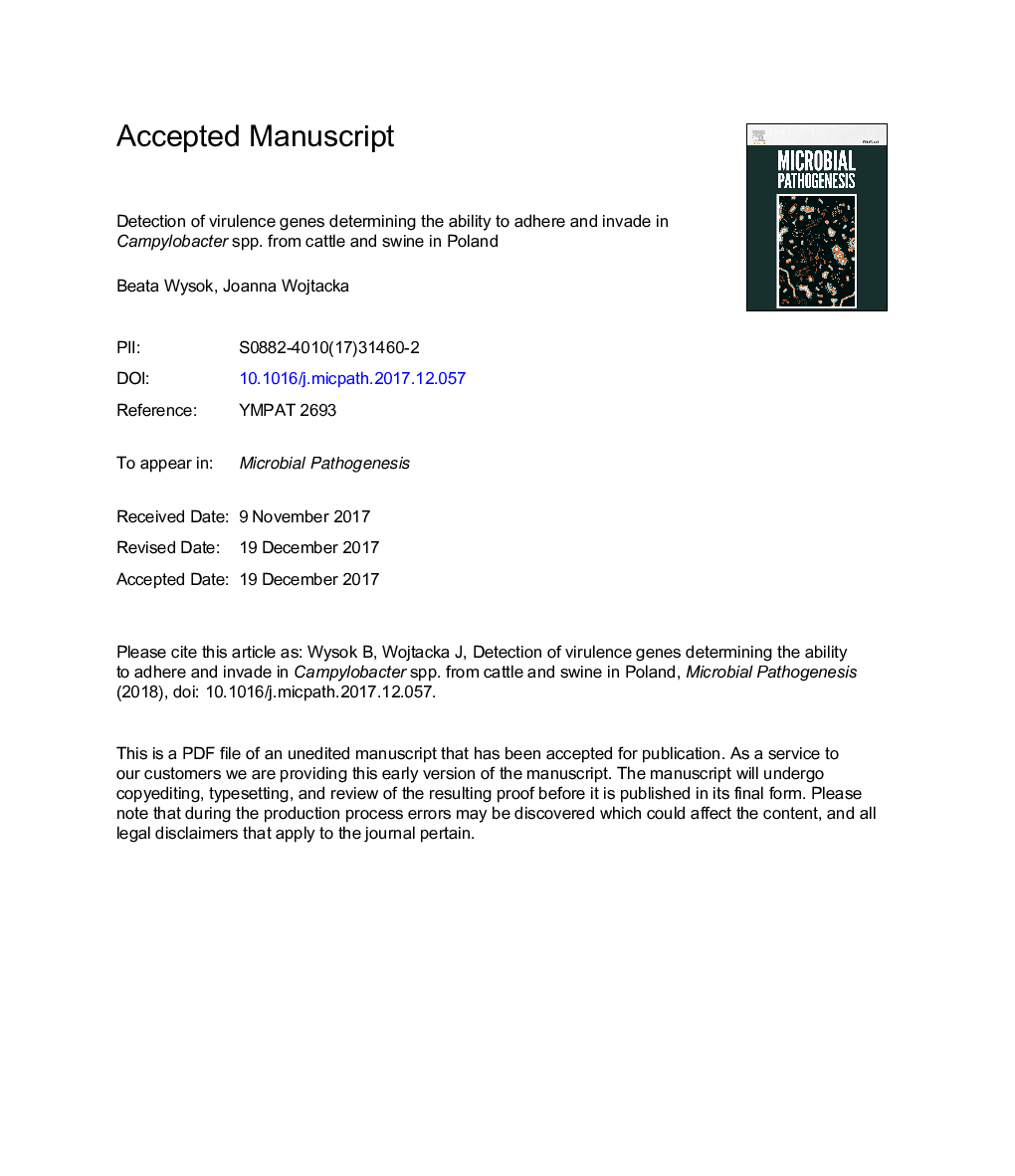| Article ID | Journal | Published Year | Pages | File Type |
|---|---|---|---|---|
| 8749815 | Microbial Pathogenesis | 2018 | 19 Pages |
Abstract
The aim of the study was to determine the prevalence of virulence genes responsible for the adhesion (flaA, cadF and racR) and invasion (virB11, iam and pldA) in Campylobacter isolates from cattle and swine and determine their adherence and invasion abilities. The studies conducted revealed high prevalence rate of adherence and invasion associated genes irrespective of the isolates origin. All Campylobacter strains of swine and cattle origin adhered to HeLa cells at mean level 0.1099%â¯Â±â¯SD 0.1341% and 0.0845%â¯Â±â¯SD 0.1304% of starting viable inoculum, respectively. However swine isolates exhibited higher invasion abilities (0.0012%â¯Â±â¯SD 0.0011%) compared to bovine isolates (0.00038%â¯Â±â¯SD 0.00055%). The results obtained revealed significantly positive correlation between invasion and adherence abilities of swine origin isolates (Râ¯=â¯0.4867 in regard to C. jejuni and Râ¯=â¯0.4507 in regard to C. coli) and bovine origin isolates (Râ¯=â¯0.726 in regard to C. jejuni). Bacterial virulence is multifactorial and it is affected by the expression of virulence genes. Moreover the presence of virulence genes determines the ability of Campylobacter isolates to adhere and invade the cells.
Related Topics
Life Sciences
Immunology and Microbiology
Microbiology
Authors
Beata Wysok, Joanna Wojtacka,
